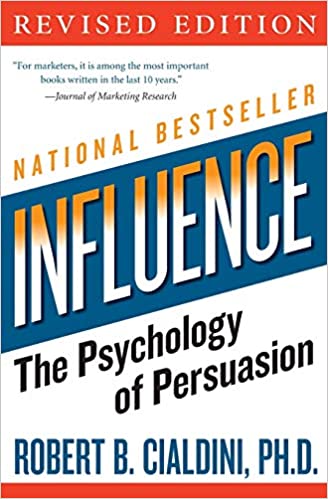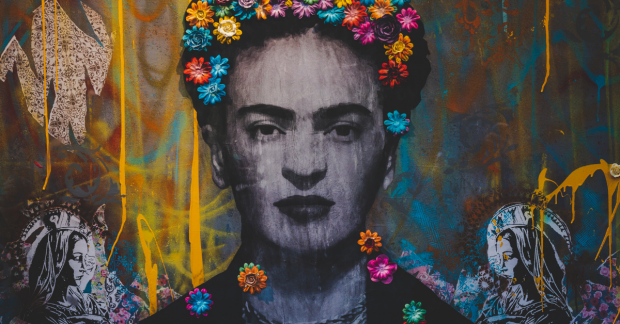There’s a wild misconception that creativity is something that some super lucky people have in abundance. Not only is that wildly untrue, but it may be holding you back. And even if you find yourself experiencing short bursts of creativity and having that well run dry when you need it most, know that creativity can be grown and honed.

The War of Art
by Steven Pressfield
⏱ 14 minutes reading time
🎧 Audio version available
Use Prompts
If you can’t find your inspiration just now, who says you can’t use a little push to prompt you?
Now, there are lots of different types of prompts out there. Really, it depends on which type of creativity you’re aiming for. If you’re, let’s say a writer, a painter, a graphic designer, et cetera, something like a six-word story prompt may help you form ideas. If none of those professions are yours, stay tuned!
Ernest Hemingway famously popularised this method when he wrote a devastating story using only six words. His story read, “For sale: baby shoes, never worn.”
So, find a topic and narrow it down to six meaningful words. You’ll get those creative juices flowing.
Writing prompts aren’t just aimed at authors and artists. So even if your creativity isn’t tied to writing, exercises like these can help jump-start the make-believe side of your brain and encourage you to act more creatively.
Instead of writing about something using just six words, how about writing a few words about one of your favorite things. Put 10 minutes on the clock and get writing. Why do you love this thing? Be as specific as you can. What’s the feeling this thing invokes in you? Who do you associate with this positive experience?
What this does is evoke emotions, and when it comes to emotions, creativity is inevitable.
Draw the Same Thing Every Day
How can routinely doing the same exercise every day promote creativity? Well, it’s simple. Kind of like how habitually going to the gym is the only thing that gets you consistent results, doing the same exercise– whether that’s push ups or a creativity exercise– can hone those muscles.
You may not think the same applies here, but you would be surprised. So, every day, set some time aside to draw the same thing, but here’s the catch! You can’t draw it the same way. The object you’re designing– this could be your pet, an animated character, a logo, et cetera…the creativity is in finding new, different, and fun ways to bring it to life. The more fun you have with it, the more inspiration you’ll find in other areas of your life.
Go Out Into the World!
What if the answer has been there all along? That the super effective exercise everyone can do to boost their creativity is actually just that…exercise?
Of course, not everyone can or has the time to go to a gym. The most important thing here is to get out of your office, away from your desk, and break out of your stifling routine and step out to greet the world.
Take a walk. Take a run. Breathe the fresh air. Get your heart pumping!
You’d never know how hard standing still could push back inspiration–until you find the refreshing alternative. When feeling uninspired, strap on some sneakers and head out.
To motivate you a little, did you know that some of the world’s greatest, most creative works were the result of someone feeling uninspired and deciding to explore the world? Walt Disney Studios animators and designers regularly visit the Los Angeles Zoo or San Diego Zoo to observe the animals. The L.A. Zoo, being only three miles away from Walt Disney Studios, allowed animators, such as Aaron Berchild, to go on weekly trips to draw the animals, resulting in animations such as Zootopia coming vividly to life.
Freewrite
Even if you’re not a writer, that doesn’t mean writing can’t help you develop creativity in efficient ways.
Developed by author Peter Elbow in 1973, freewrite is as simple and effective as they come. Sit down with a pen and paper, start a timer, and write. Don’t think. Just write, totally unfiltered. Transfer all the thoughts from your brain to paper until the timer goes off. If all you can think of is “I can’t think of what to write next,” then write that down! What matters is keeping your pen moving.
This will do one of two things: it will either help you filter out all those unnecessary thoughts that are blocking your creativity– or it will help you create the vision you’ve been trying to bring to life. If nothing else, you’ll get a clear glimpse of what is going on in your cluttered mind. Who knows, you may even be surprised with what you come up with.
Sketchnoting
Sketchnoting is an out of the box visual thinking method that works wonders. If taking notes isn’t your thing, you’ll love this exercise.
Just like it sounds, sketchnoting is taking notes, not in the form of words, but in images and sketches!
If you want to draw a cartoonish sketch of your plan, go for it! If all you can come up with are diagrams, then do whatever you’re comfortable with.
Sketchnoting is on a different level than doodling; simply because it’s deliberate. Doodling, which is actually also an exercise to prompt creativity, doesn’t require that much brainpower. You’ll do it mainly to distract yourself from something boring or to pass the time.
Sketchnoting, on the other hand, captures images. Your sketches find ways to represent the creative ideas that you can’t put into words.
Draw 30 Circles
Are you stuck on something or struggling with a mental block? Here’s how the pros do it. Draw a total of 30 circles.
You can print out templates with 30 empty circles on a piece of paper or you can draw them yourself on a blank piece of paper. What you do with those 30 circles is what matters.
Put three minutes on a timer and start the clock. Now, your job is to fill as many of those circles with recognizable drawings as you can.
Now, these drawings can be anything you want. They can directly relate to the idea you’re trying to create or it can be anything from coloring in a clock to sketching a pizza.
What happens is that the more circles you fill, the more your brain is challenged to come up with a more creative idea in the next. When the three minutes are up, take a minute to reflect on what you made. Can you glean a gem from these ideas? Do you feel powered up to creatively apply yourself to the next activity? You never know when that light bulb is going to light up in your mind.
The Alternative Uses Test
Developed in the late 1960s by psychologist JP Guilford, the Alternative Uses Test is an innovative creativity exercise. Its purpose is to get those creative muscles moving. Guilford wanted to measure people’s divergent thinking instead of convergent thinking. So, instead of it being a traditional test, which focuses on your ability to reach the one correct solution to an issue, the test encourages your mind to generate a cloud of ideas.
The Alternative Uses Test is finding something that’s familiar to you and looking at it through a new lens and then finding an alternative use for it.
This can be anything from a brick to a paper clip.
The test’s results are measured on the number of alternative uses, their originality and how unusual they are, their range across different categories, and their level of detail.
Draw a Blind Portrait
Art teachers use this exercise to not only hone an artist’s creativity and abilities, but to also develop the communication between a person’s brain, eyes, and hand.
A blind portrait doesn’t necessarily mean you have to draw a person. Draw whatever you like, as long as you don’t look at the paper.
The result isn’t actually the objective of this exercise. The objective is thinking about your surroundings, noticing details that you didn’t before, getting your mind active, and practicing your hand-eye-brain coordination.
Aliens Have Landed
Aliens have landed! And they have landed right here in your office. They have no understanding whatsoever of your language or culture. Your task is to present your idea in whatever tools you can. Draw it, build it, sketch maps, timelines, icons, et cetera– the most important thing is expressing yourself using visual language.
If you want to take things up a notch, limit your explanation to just five pictures or symbols and set a timer for five minutes.
If you can get your point across to aliens, then consider your creativity effectively developed.
What Is Snapreads?

With the Snapreads app, you get the key insights from the best nonfiction books in minutes, not hours or days. Our experts transform these books into quick, memorable, easy-to-understand insights you can read when you have the time or listen to them on the go.


